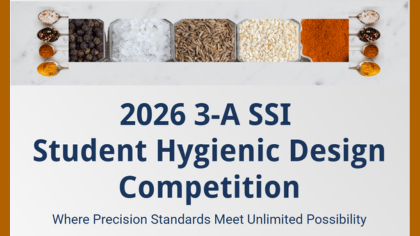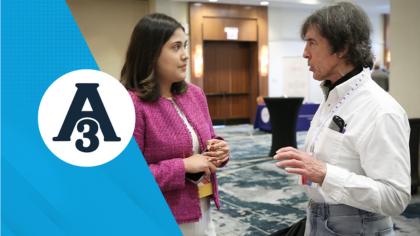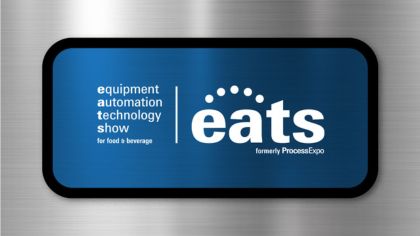



Whether you're an equipment manufacturer fielding customer service calls about contamination issues or a food processor dealing with failed inspections and costly recalls, you know these problems all too well:
For over 100 years, the dairy industry has solved these exact challenges using 3-A Sanitary Standards. Now, forward-thinking equipment manufacturers and food processors across industries are discovering how these proven principles can solve their operational problems too.
At the 2025 Summit on Hygienic Design in Chicago, equipment manufacturers and food processors shared real-world success stories of applying the ANSI/3-A Sanitary Standard for General Requirements (GR) beyond traditional dairy applications. The panel "The Evolution of 3-A Sanitary Standards in Non-Dairy Production" revealed how these partnerships are solving common industry challenges.
The Problem: Food processors face increasing pressure to prevent allergen cross-contact, especially during product changeovers. Equipment manufacturers receive urgent calls when contamination incidents threaten to shut down production.
The 3-A Solution: Josh Burgess of McCormick & Co. explained how equipment designed to 3-A Standards address this challenge: "These Standards are critical for allergen control in many applications today, including hot sauces, condiments, and other food products. The design criteria ensure cleanability, which helps provide essential allergen protections."
For Equipment Manufacturers: By designing to the GR Standard, you're not just selling equipment—you're selling allergen protection and peace of mind that reduces customer service calls.
For Food Processors: Investing in 3-A compliant equipment means fewer production interruptions, reduced contamination risk, and protection against costly recalls.
The Problem: Equipment with dead zones, hard-to-reach areas, or surfaces that harbor bacteria creates ongoing headaches for food processors and warranty issues for equipment manufacturers.
The 3-A Solution: Warren Green of Hixson Architecture highlighted successful applications in "low-acid foods, teas, water, high-pulp orange juice, and soup broth," noting that the GR Standard ensures "both product and non-product contact surfaces meet hygiene requirements."
For Equipment Manufacturers: Following GR design principles eliminates the common pain points that generate customer service calls and warranty claims while creating more satisfied customers.
For Food Processors: Equipment built to 3-A standards reduces cleaning time, eliminates problem areas, and ensures successful changeovers between products.
The Problem: Operating across multiple jurisdictions means navigating complex, sometimes conflicting regulatory requirements that slow approvals and increase costs for both manufacturers and processors.
The 3-A Solution: Chris Horton of DeLaval, Inc. noted how the GR aligns with the FDA Grade A Pasteurized Milk Ordinance (PMO) and provides a foundation that "regulatory liaisons rely on to verify component compliance, reducing audit times with clear design specifications."
For Equipment Manufacturers: Equipment built to 3-A Standards provides customers with a regulatory "passport" that simplifies compliance and opens new markets.
For Food Processors: 3-A compliant equipment streamlines inspections, reduces audit preparation time, and provides confidence when entering new markets.
Forward-thinking equipment manufacturers and food processors across industries are discovering how these proven principles can solve their operational problems too.
Equipment manufacturers are partnering with producers to apply 3-A principles to mixing, filling, and packaging equipment for spicy and acidic products that present unique cleaning challenges.
Graham Hicken of Tetra Pak Inc. described how "biomass and fermented food manufacturers are increasingly turning to the criteria in the GR Standard for hygienic design guidance," especially in emerging categories where specific regulatory standards don't yet exist.
Processors have successfully implemented 3-A principles in tea processing, water treatment, and high-pulp juice production, demonstrating the GR’s versatility across liquid applications.
From plant-based proteins to fermented foods, the partnership between equipment manufacturers and processors using 3-A Standards is enabling innovation in rapidly evolving product categories.
Differentiate Your Equipment: While competitors sell features, you can sell proven solutions to real operational problems.
Reduce Support Costs: Equipment designed to 3-A principles requires fewer service calls and generates fewer warranty claims.
Access New Markets: Larry Hanson of CIP Concepts, LLC explained how the principles found in the GR underpin standards from "NSF, ASME BPE, EHEDG, and bakery standards," giving manufacturers credibility across multiple industry segments.
Future-Proof Your Designs: The standards evolve with technology—Graham Hicken noted that "additive manufacturing is even being proposed as a new definition within the GR framework."
Reduce Operational Risk: 3-A-conforming equipment inherently addresses contamination prevention, regulatory compliance, and cleaning challenges.
Improve Operational Efficiency: Better cleanability means faster changeovers, reduced downtime, and more consistent production.
Enhance Market Access: Equipment that meets 3-A Standards often satisfies regulatory requirements across multiple jurisdictions.
Protect Brand Reputation: Investing in proven hygienic design principles reduces the risk of contamination incidents that can damage brand trust.
The most successful outcomes occur when equipment manufacturers and food processors work together from the design phase.
The most successful outcomes occur when equipment manufacturers and food processors work together from the design phase. Chris Horton emphasized how this collaboration helps "smaller food producers, such as a local jam maker who may need better equipment as they scale up production."
This partnership approach ensures:
The challenges you face—contamination, failed inspections, regulatory compliance, and cleaning difficulties—are exactly what 3-A Standards were designed to solve. The dairy industry has proven these standards work for over 100 years. Now it's time to bring that same level of protection and performance to your non-dairy operations.
Equipment Manufacturers: Ready to differentiate your equipment and solve your customers' biggest challenges?
Food Processors: Ready to reduce operational risk and improve efficiency?
Contact 3-A SSI at www.3-a.org to learn how these proven standards can transform your operations and partnerships.
3-A Sanitary Standards Inc. works with equipment manufacturers and food processors to ensure hygienic design principles protect food safety across all applications.

3-A SSI has launched an all-new program to recognize rising stars under the age of 40.

3-ASSI has launched an all-new Student Hygienic Design Competition. It gives students an opportunity to launch their careers while competing as part of an interdisciplinary team for bragging rights and a share of $10,000 in prize money.

The application is open for the 3-A SSI Dr. Ron Schmidt Student Travel Award. Recipients attend the 3-A SSI 2026 Summit on Hygienic Design, present a poster, and are treated to a VIP experience. After the event, recipients' research is published on the 3-A blog and promoted on social media. Many students land internships or full-time jobs as a result of the recognition.

After a productive and engaging PACK EXPO, the 3-A SSI team turns its sights to EATS and the IDFA DairyTech Conference.